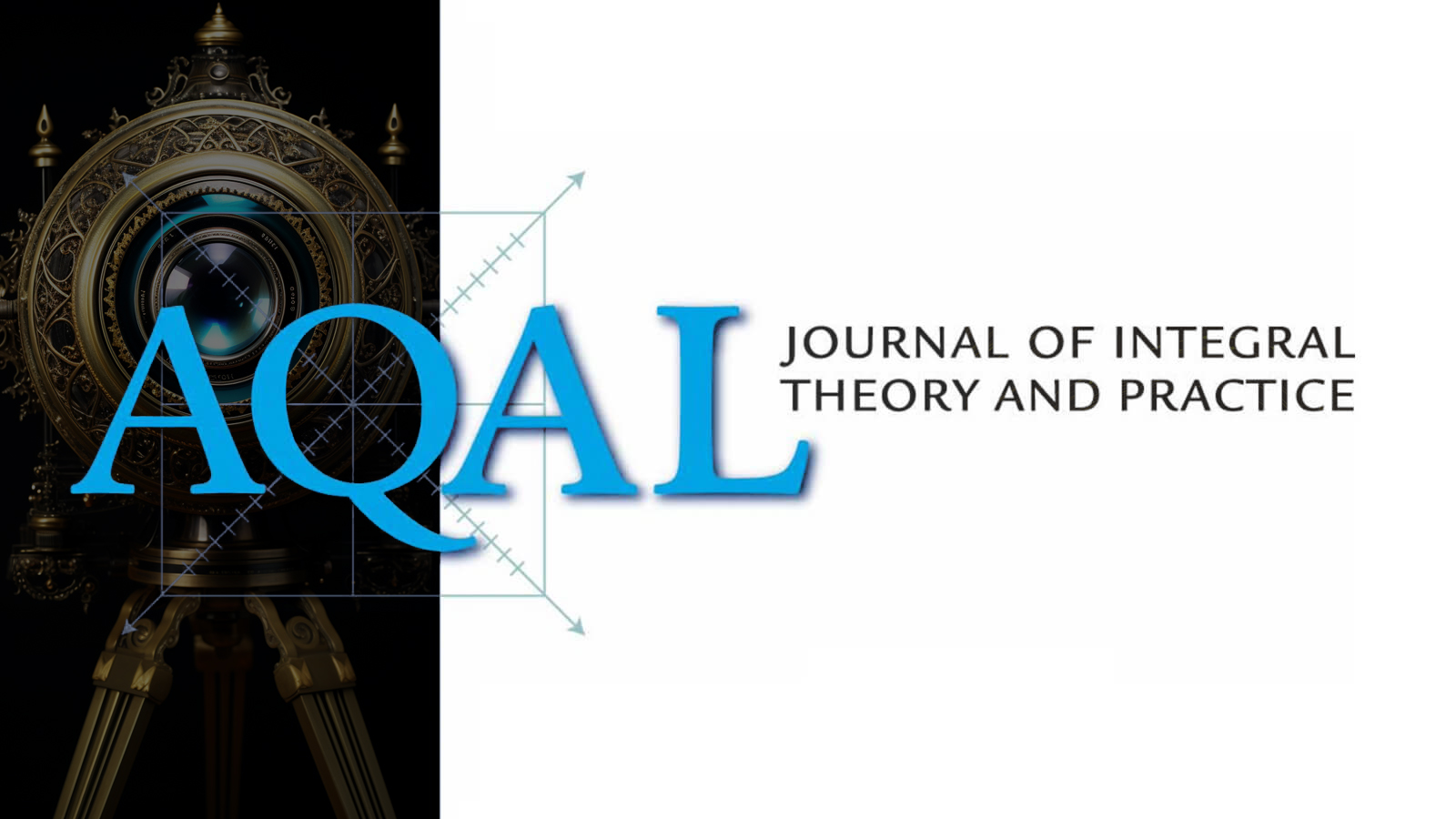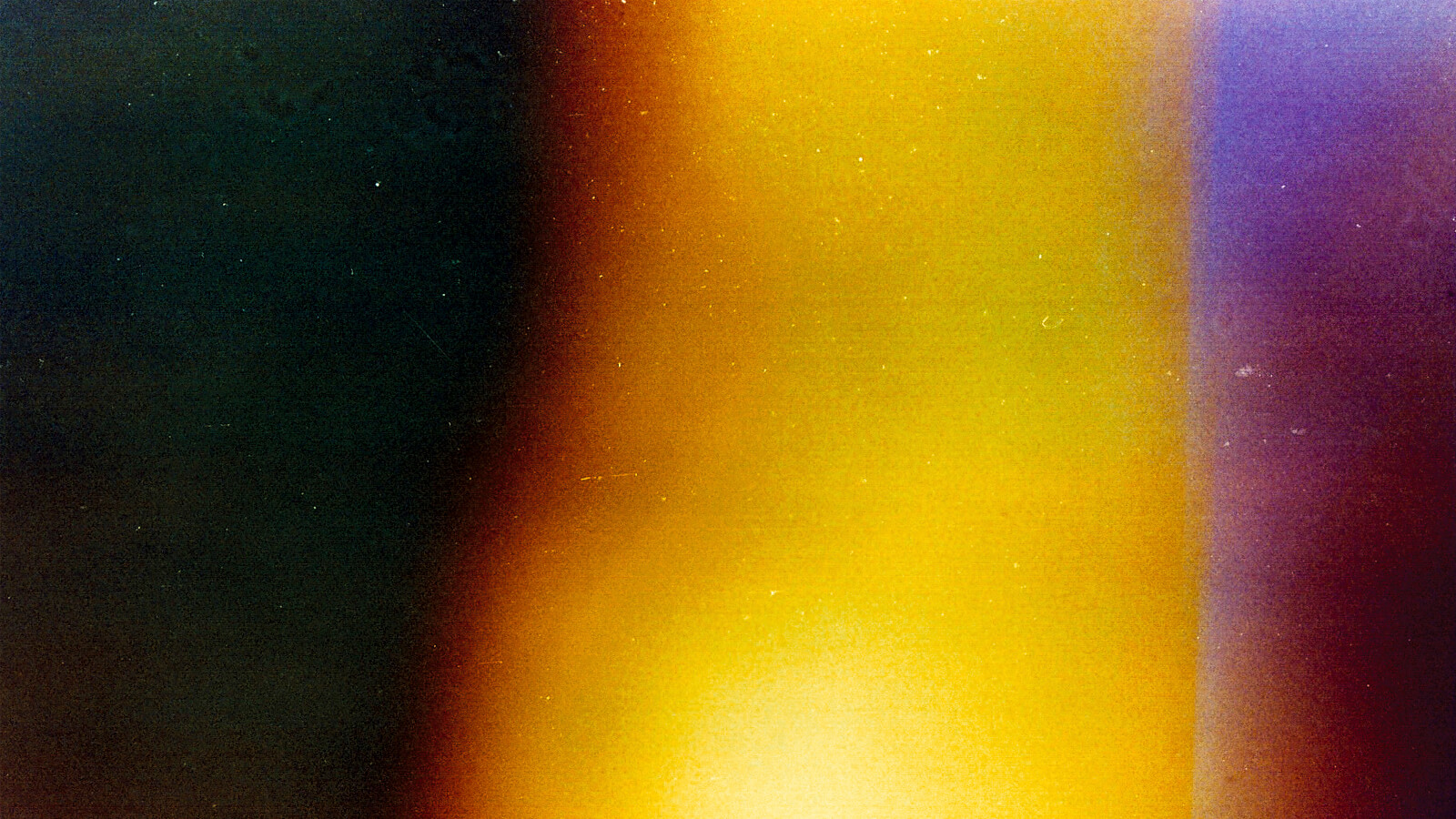
When I am standing at the foot of Michelangelo’s David, or sitting in front of Rembrandt’s Night Watch, or watching Kubrick’s 2001: A Space Odyssey (1968), I can feel a powerful presence emanating from their work that gives me the felt-sense that some aspect of the artist’s own presence and consciousness is radiating out from the stone, the canvas, and the screen. There are moments in the performance of actors in which I can feel the beingness of their characters exuding from their pours. I have felt physically affected by the mere juxtaposition of shapes and colors; and I have had deep emotional catharsizes and profound transcendental realizations from the convergence of a set of particular textual, visual, and auditory patterns.
All these aesthetic-sensory experiences1 and more have made me wonder if there is more going on in artistic works in general and in cinematic works in particular that goes beyond the mere expression and reception of content, style, structure, and form. This question also arises out of the previous discussion on the embedding of altitudes of individual and collective consciousness, in terms of understanding just how a certain structure of consciousness is embedded in a creative work and communicated to and received by the viewer.
One way to explore this more elusive dimension of creative expression and reception is through what I am calling the ENERGETICS LENS. We use the word “energy” in a variety of ways, from describing the force of the electricity we use to power our tools, to our own physical stamina, to the power of our emotions, and to more subtle dimensions of body, heart, mind, soul and spirit. In the arts we often talk about the energy of mood, tempo and style; and we use terms like emotional energy, creative energy, the energy of the moment, the energy of the space, etc.
Since art in general and cinema in particular communicate through the transmission of light and sound,2 which both operate through frequency spectrums that transfer energy through space, every moment of projected image and sound of a cinematic work can be said to essentially have its own particular energy signature. Some film theorists have explored the dynamics of what can be called cinematic or kinetic energies that are inherent in the perceptual reception of moving imagery.3
From an Integral perspective, energy is generally considered to be a material-reality-based phenomenon (UR/LR) that can be quantified and measured. All forms of matter are said to have their corresponding energy bodies, fields, frequencies, and/or signatures. While energy technically resides in the material dimensions, energy is also deeply and intimately correlated to phenomena in the individual and collective subjective dimensions (UL/LL) as well. Every emotion (UL) has a correlated physical energy pattern (UR) that we can “feel,” and we can sense systemic energy fields (LR) in our relational, group, and/or cultural spaces (LL) if we are so attuned.4
Basically, every state, type, and line and level or altitude of individual and collective interior and exterior development on the Integral map has its own direct and/or correlated “micro-energetic fingerprints or signature energy patterns” (Wilber, 2002, Volume 2 of the Kosmos Trilogy: Excerpt G).
Combining past and current findings and observations from both science and ancient wisdom traditions, Wilber has laid out a preliminary mapping of this vast and complex energy spectrum into an Integral Energy Taxonomy covering the more general categories or families of energies (Energy Bodies) of Gross, Subtle, and Causal and their corresponding genus’s (Fields and Field Spectrums) and species (Frequencies and Frequency Spectrums).5
Table 1 below shows an adapted version of this energy taxonomy along with the corresponding levels of consciousness/awareness associated with these dimensions of energy. I have also added a preliminary mapping of potential cinematic energy fields and field spectrums, based on an integration of this Integral Energy Taxonomy with advanced theories from the field of cinematic expression,6 and expand on this in the discussion below.

Table 1. A Preliminary Taxonomy of the Energy Spectrum with Correlations to Levels of Consciousness/Awareness and Cinematic Energy Fields.10
In the cinema, the Gross Body or Sensory-Kinetic Field level of energetic transmission and reception appears to be the most immediately felt and perceived by the viewer. This level of energy potentially includes: The energy frequencies and signatures projected and generated by camera movement; the movement of the visual objects in the frame; the physical actions of the characters; the rhythm and pacing patterns created by editorial transitions (i.e., cuts, dissolves, etc.); the body position and stances of the characters (i.e., the difference between a hunched over character position versus an aggressive fighting stance, etc.); the energy generated by sound frequencies (i.e., a deep base sound rumbles and shakes the theater, etc.); and the frequencies of imagery patterns (i.e. the energy signatures of various shapes, colors, tones, etc.)

2001: A Space Odyssey (1968) and the Gross Sensory-Kinetic Energy of Character and Visual Object Movement
At the Subtle Body / Vital-Kinetic Field level we potentially have the energy projected and generated by spatial/environmental fields within the frame (i.e., characters standing in a closed versus open space, etc.); character positional interactivity fields or the energy of the space between character positions (i.e., the space between two characters as they face each other prepared to fight, etc.); and character physical energy states (i.e., focusing on the characters breath, or on a dying character’s life-force, etc.).

2001: A Space Odyssey (1968) and the Gross Vital-Kinetic Energy of Character Breath and Life Force
The Subtle Body / Emotional-Relational Field level is the realm of character sexual and emotional-relational states; emotionally and/or sexually charged images and sounds; and emotional-relational referential density11resonance or the built up emotional/relational charges within and between characters over time (i.e., a character goes through several bad emotional experiences, each one adding another level of emotional density to similar events and situations, etc.).
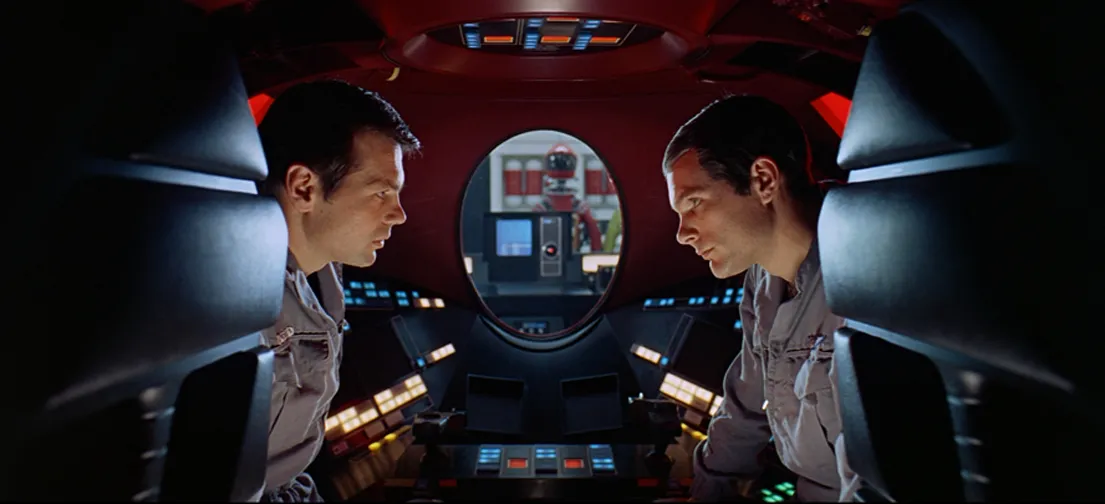
2001: A Space Odyssey (1968) and the Subtle Emotional-Relational and Mental-Perspectival Energies12
The Subtle Body / Mental-Perspectival Field level of cinematic energies potentially include: The energy frequencies and signatures of character mental states; character, narrative event, thematic, set and setting, and embedded cinematic creator perspectival-developmental altitudes (i.e., Red, Amber, Orange, Green, Teal, etc. developmental altitudes in all four quadrants); and mental-perspectival referential density resonance or the built up mental-perspectival charges within and between characters, narrative events, thematic, and set and setting energy signatures over time (i.e., the progression of characters, events, themes, and set and setting can produce a growing mental and perspectival understanding, as in 2001: A Space Odyssey’sprogression of these elements establishing an evolutionary arc throughout the film).
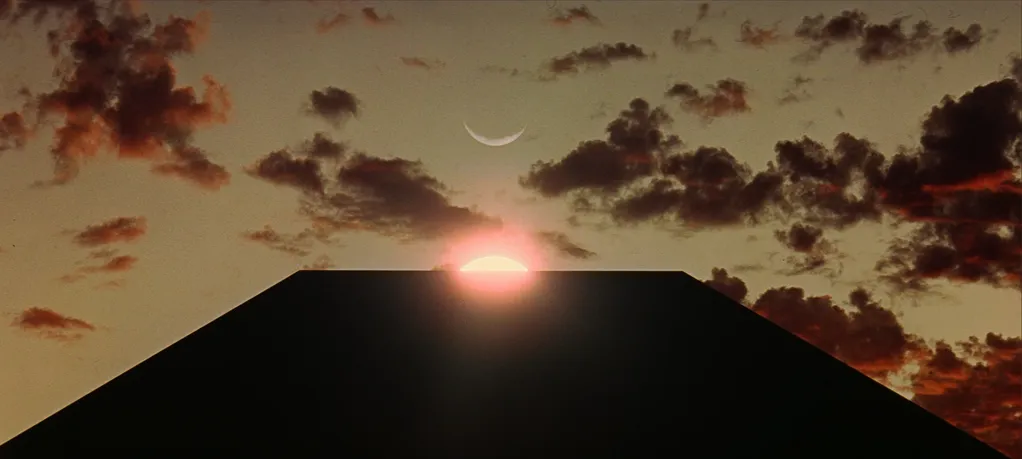
The Monolith in 2001: A Space Odyssey (1968) and the Potential Transmission of Causal Transcendental Cinematic Energies.
The Causal Body / Transcendental Cinematic Field level is the most elusive realm of what I am defining as cinematic energies. Here, preliminary analyses suggest, we can potentially find the energy signatures of things like character presence or beingness; cinematic witness states in which we the viewer can become conscious of and bear witness to multiple and simultaneous dimensions of the cinematic work; and in cases of viewing the work of a cinematic master, the potential to energetically sense the presence of the creator or creators of the cinematic work.13
In this energetic field level it appears that we may also find transcendental dimensions of textual, visual, and auditory referential density resonance. Using the example of the image and presence of the monolith in 2001: A Space Odyssey (1968), we can potentially see how a high degree of referential density resonance attached to an image and its corresponding sounds and narrative events can theoretically approach these more elusive transcendental or causal energies.
To explore this we need to attempt to more fully unpack the referential density resonance process from the Energetic Lens perspective: We can start with the idea that an image like the monolith most likely has its own baseline energy signature, as do the sounds and narrative events associated with it. When combined, their collective signature theoretically becomes a growing and deepening reference point. In other words, through a series of textual, visual, and auditory patterns the cinematic artist can potentially associate layers of referenced meaning onto the image-sound-textual object, thus charging that particular image-sound-textual object frequency with those layers of meaning-energies.
For example, the image of the monolith and its associated sounds and narrative events potentially turns the monolith into the energetic symbol for a communication link that points to a higher source of knowledge beyond our grasp: Primitive ape-men touch the monolith and discover tools; astronauts on the moon touch it, are deafened by its sound, and then are guided by its signal broadcast to travel to Jupiter; the monolith opens a star gate taking an astronaut to another dimension and/or physical location in the universe; and finally the monolith appears to be the gateway for the astronaut’s death and ultimate rebirth as a star child.
All of these attached and accumulated referential meaning patterns point to an unseen and/or transcendent being or force that is guiding and transforming humanity for what appears to be a higher evolutionary purpose. Each of these meaning patterns theoretically alters the energy signature of the monolith and thus potentially charging the image-sound-textual object of the monolith with all those layers of transcendental energy and meaning.
In general, it appears that any given cinematic moment contains a number of these different energy bodies, fields, frequencies, and signature patterns to a varying degree. Taken together, all these cinematic energy structures represent a preliminary taxonomy of what we might call the cinematic energy spectrum (See Table 2 below).

Table 2. A Preliminary Taxonomy of the Cinematic Energy Spectrum14
My initial research on the process of how these cinematic energies are transmitted suggests that cinematic energies are transferred from screen to viewer through several different potential and simultaneous energy transference modalities:
Gross/Direct Energy Transference. At the gross cinematic energy level, the transmission of cinematic energies appears to be fairly direct and obvious as the often palpable sensory-kinetic frequencies are transmitted through the projected images and sounds to the viewer. More precisely, light and sound frequencies are being captured and then transmitted via cinematic light and sound cinematic technologies (cameras, projectors, computer screens, etc.), which are then received by the sense organs, translated into bioelectric impulses, and transmitted to the brain, nervous system, and various other physical organs and systems, producing a mirroring of those same frequencies in the viewer.15
I received a powerful lesson of this type of cinematic energy transmission in one of my filmic expression courses when the instructor projected a series of images that used the juxtaposition of opposing color and shape frequencies (white/red, square/circle, etc.) to induce physical effects…basically all of us in the room felt dizzy and nauseas just from watching these images to the point of nearly falling off our chairs. Cinematic artists can use this type of gross energy signature for both extreme and more subtle effects. For example, in the image below from 2001: A Space Odyssey(1968), Kubrick uses the juxtaposition of color, shape, texture and form to create a subtle yet palpable sensory-kinetic separation between the character and the space around them.
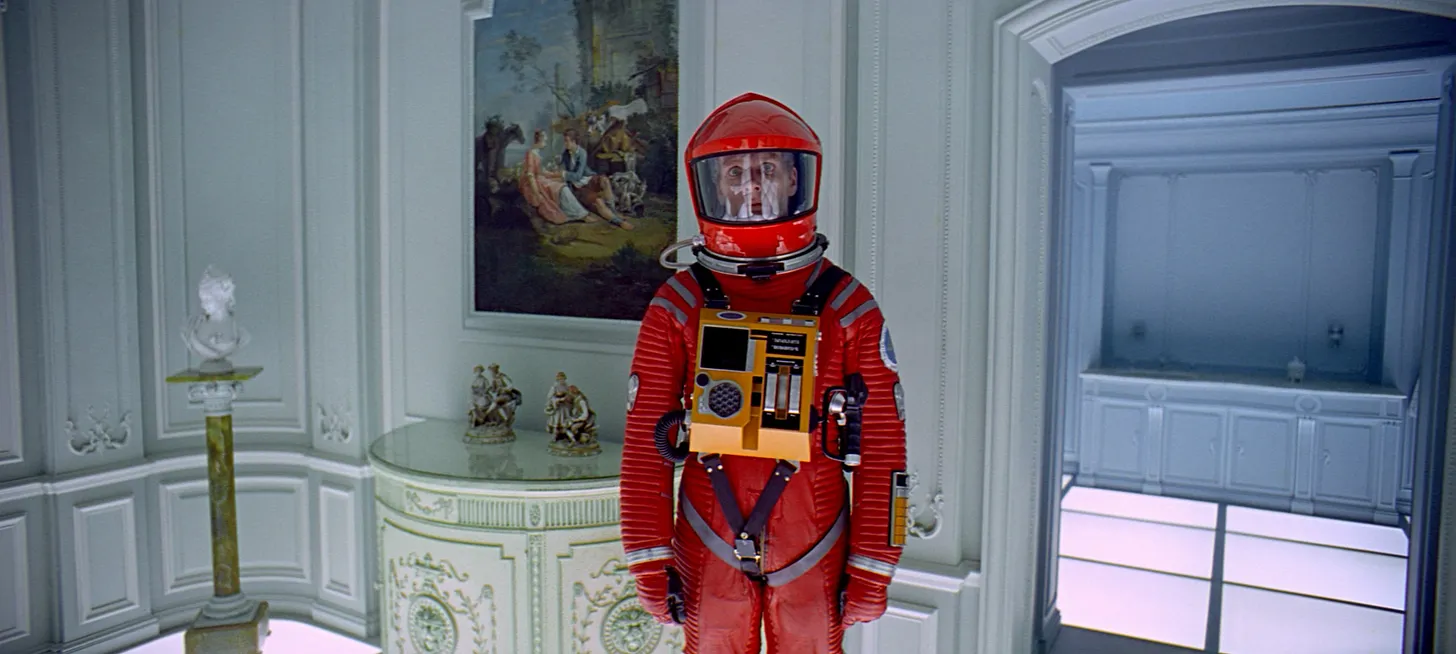
2001: A Space Odyssey (1968) and the Creative Use of Gross/Direct Energy Transference
Subtle-Causal/Direct Energy Transference. On the more subtle and causal energy levels, it also appears that the energy signatures of various individual and collective emotional-sexual states and mental, higher-mental, and over-mental states and structures of consciousness may also have the capacity to be directly captured, embedded, and projected energetically from the cinematic work to the viewer. While the means/mechanisms of this transmission is still up for debate, there are significant research findings to suggest that energy systems, bodies, fields, frequencies, and signature patterns can capture, contain, and transmit some of the elements and dimensions of consciousness to varying degrees, including energetic and informational dimensions associated with subtle emotional, mental, and perspectival patterns, and potentially even causal, witness, and non-dual states and state-stages as well.16
These same findings strongly suggest that these consciousness-to-energy signatures have the potential to be embedded in material objects, including the materials used in artistic and cinematic works.17 This potential link between individual and collective consciousness (UL/LL) and energy bodies and systems (UR/LR) suggests a high degree of tetra-enmeshment in all quadratic dimension-perspectives on the Integral map (see Diagram below).

Mapping of the Tetra-Enmeshment of Consciousness and Energy in all Four Quadrants18
Semiotic-Mirroring Energy Transference. In addition to Gross/Direct and Subtle-Causal/Direct energy transfer, there also appears to be a semiotic-based transfer of energy occurring whereby captured and projected signs and symbols (words, visual symbols, musical metaphors, etc.) ignite their corresponding potential gross, subtle, and causal energy signatures in the viewer’s energy bodies as the signs and symbols are translated by the brain into their meaning patterns, producing an energy mirroring effect.
For example, in the area of text, word meanings have their own unique energy signatures; the author and/or communicator feels these energy signatures of the meaning behind their words; the words, either spoken or written or represented (symbolically, visually, sub-textually, etc.) contain the meaning code that is then communicated to and translated by the receiver (listener, reader, viewer, etc.) whose brain then decodes the words into their meaning patterns, which at the same time produces the original energy signature of that meaning code in the receivers energy structure.
This process is relatively complex in that the original meaning code of the text creator/communicator is translated through the construct lenses of the receiver (mental, emotional, cultural, etc.; memories around words, symbols, etc.), so the energy signature is often altered to some degree from its original intent.19
In the image above from 2001: A Space Odyssey, in addition to the transference of Gross/Direct Energies, we can also see an example of the Semiotic-Mirroring Energy Transfer process in the area of visual symbols, in that we the viewer assign various meaning patterns to the different colors (red for danger, white for purity, etc.), and to the different shapes and forms (a modern scientific-related spacesuit versus a more antiquated environment along with all their various connotations) depending on our personal, cultural, and social constructs, which in turn produces a certain energetic response in our bodies.
As stated above, all these potential modalities of cinematic energy transmission are most likely occurring simultaneously in every moment of a cinematic work to a greater or lesser degree.

Altered States (1980) and the Multiple Modalities of Cinematic Energy Transmission20
In the above collage from a scene from the film Altered States (1980), we can see an example of this type of potential multiple and simultaneous expression of cinematic energies (see above and Table 3 below for a more detailed description of these cinematic energy fields and frequencies).
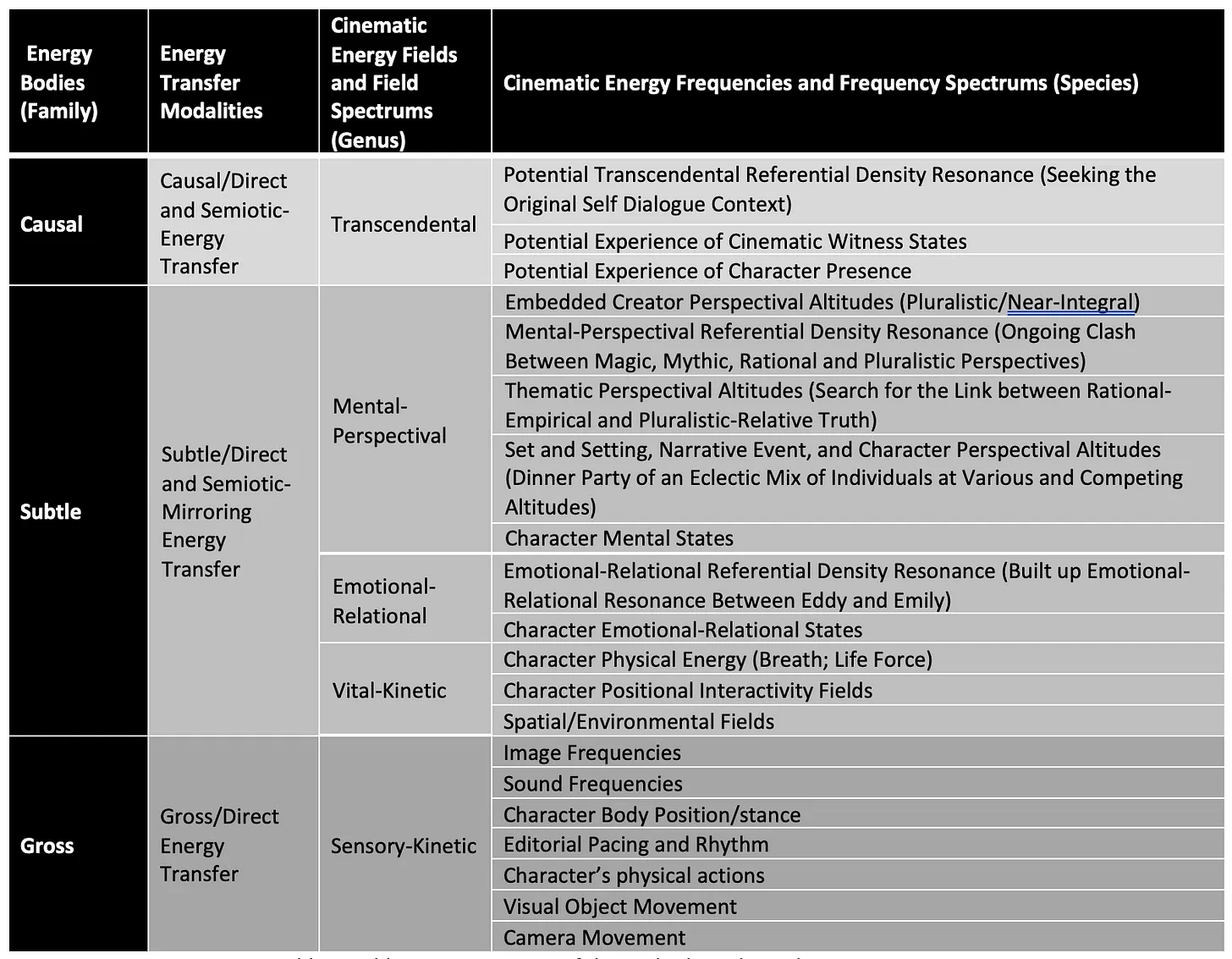
Table 3. Table Depicting Some of the Multiple and Simultaneous Energies Potentially Being Transmitted in the Above Clip from Altered States (1980)21
While we can potentially analyze and chart these multiple simultaneous energy patterns in a cinematic work, the process appears to be much more elusive as we get further into it, as the micro-energetic signatures of every emotion, thought, perceptual field, and existential and transcendental concept radiating between the cinematic work and the viewer synchronously light up, and then intermingle with the viewer’s own accumulated gross, subtle, and causal energy structures and correlated developmental altitudes, states and typologies.
In addition to this complex web of cinematic energy transmission and reception, the mapping of this process becomes more challenging when we remember that while every thought, emotion, and perception has a correlated energy signature, they cannot be reduced to purely these energy structures. However, working with the Energetic Lens does appear to get us closer to understanding and reproducing this more elusive dimension of creative expression and reception, and potentially lead us to a greater understanding of cinematic altitude embedding and the sensory-aesthetic experience itself.22
According to my preliminary research, it seems that some cinematic artists, including most if not all of those who are considered to be masters, appear to have an almost intuitive capacity to sense and work with these cinematic energies. It also appears that this capacity can be trained to some degree.
Back during my film school days I was graced with some of this type of cinematic energy training. In my editorial training with Robert Wise, he talked about being able to feel or sense where a shot transition (cut, dissolve, etc.) needed to be. He spent hours with me helping me learn how to sense the energy patterns within the shot; in essence teaching me how to “trust the force” of a shot; to look beyond content, structure and form, and to feel the energetic flow of the shot as a whole.
Then he taught me how to combine this energy sensing with analysis of the other elements; for example, in a dialogue there is a space between one characters expression and another that technically is there, but within that space there is a precise moment where the transition is perfect, where the energies of the interaction are taken to a whole new level and the transition itself becomes experientially invisible.
With this type of practical application of the Energetic Lens, cinematic artists can potentially create more subtle, deep, powerful, multi-dimensional, and energetically immersive cinematic works. In addition, advanced understanding and use of this lens appears to have the potential to unlocking some of the secrets to what makes a cinematic masterpiece.
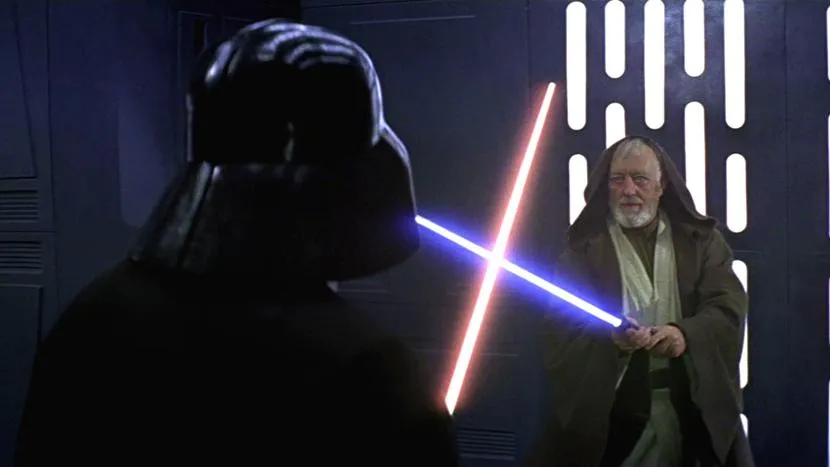
Star Wars (1977), “The Force,” and the Tetra-Enmeshment of the Cinema With Individual and Collective Consciousness and Energies
My cinematic energy training very much parallels the metaphor of Luke Skywalker’s training of using “the Force” in the Star Wars films, and both this process/metaphor and the Star Wars films in general and their enmeshment with the greater culture bring us to the question of the connection between collective consciousness and energies and the cinematic work. Here the metaphor of “The Force” brings us deeper into the more collective dimension of the Energetics of the cinema.
Having mostly focused on the cinematic energies as they relate to the cinematic work and the individual cinematic artist, I will now attempt to expand our exploration into the even more ephemeral realm of the potential enmeshment of collective consciousness and energies within and beyond the cinematic experience.
Picking up where we left off on the influence of the cinematic creator or creators on the embedding and transmitting of energies in and through a cinematic work, and considering the collective creation team nature of the making of a cinematic work, the question arises just how can the energetically-charged vision of a single creator be translated clearly through the greater field of consciousness and energy at work in the collective creative experience?
One possible answer to this question may be found in the commonly known social contagion effect found in the cinematic creation process, from the capacity of a great actor to uplift the performances of other actors in a cinematic work, to the well-known effects that the director’s state of mind can have on the entire cast, crew and environment on the set.23
On the surface, these effects can be partially explained by the fact that the cast and crew tend to focus most of their attention on both the people making the major decisions (directors, producers, etc.) and on the actor’s performances. Yet, having witnessed both of these effects personally, many times, I can attest to a deeper power and influence going on in these situations, in which I have felt an almost palpable shift in the energy between creative team members and on the collective atmosphere of the set itself. In these moments, it felt to me as if a powerful force was radiating from the actor or director or producer, etc. out to the rest of the creative team and out into the greater environment.
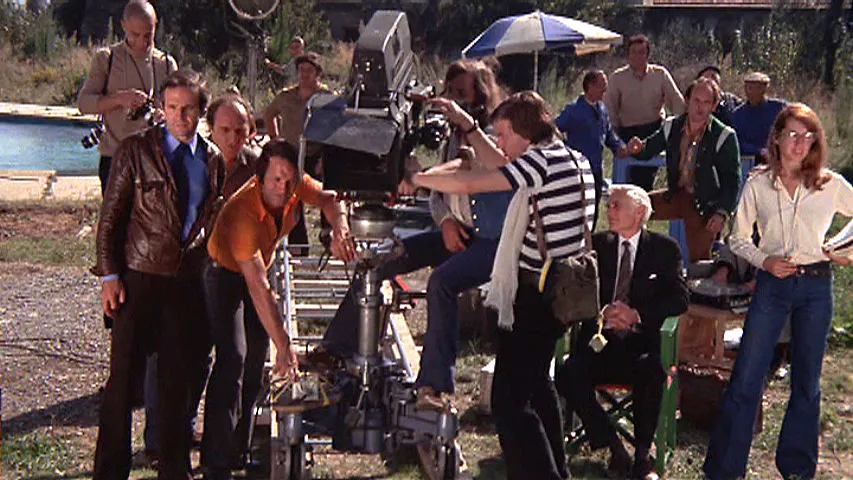
François Truffaut’s Day for Night (1973) and the Tetra-Enmeshment of Individual and Collective Consciousness and Energies in the Cinematic Creation Process24
I have also experienced powerful energetic influences in the opposite direction, from the energetic field of the creative team into the individual team members. For example, I was directing a dramatic video I wrote for a class at the American Film Institute (Write This Down, 1982),25 and we were way behind schedule and only had the location we needed for a few more hours. Added to that, we had already been shooting all day and those few remaining hours would mean we would have to work through the night as well. I gathered the entire cast and crew and explained our situation. Since everyone was working for free I surrendered it to the group, and within a matter of minutes the group decided that we needed to finish and came up with a way to shoot all our shots in the allotted time.
An excited and charged energy radiated from the group and seemed to permeate the set and miraculously give us all added stamina and energy to make it through the night. In addition, cast and crew members seemed to be profoundly in sync with each other and with the environment, finishing each other’s sentences, fulfilling needs without them being spoken, and strangely pre-sensing material events, including my uncanny ability to know when the video recorder would go into standby mode. It became a running gag throughout the night that I would tell the video recorder to go to sleep and every time, like magic, it instantly went into standby.
Later, when I got the material we shot into the editing room, I noticed a marked difference between the material shot during that charged energy period and the material shot before it. The performances seemed more deep and powerful, and the camera work appeared to be more in synch with both the performances and with the visual metaphors I had been attempting to capture. I also perceived a more general subtle and causal energetic charge to the material itself. It seemed to have an almost hypnotic quality to it, and when I edited it together and screened it for others it appeared that I was not alone in having this experience of the material.26
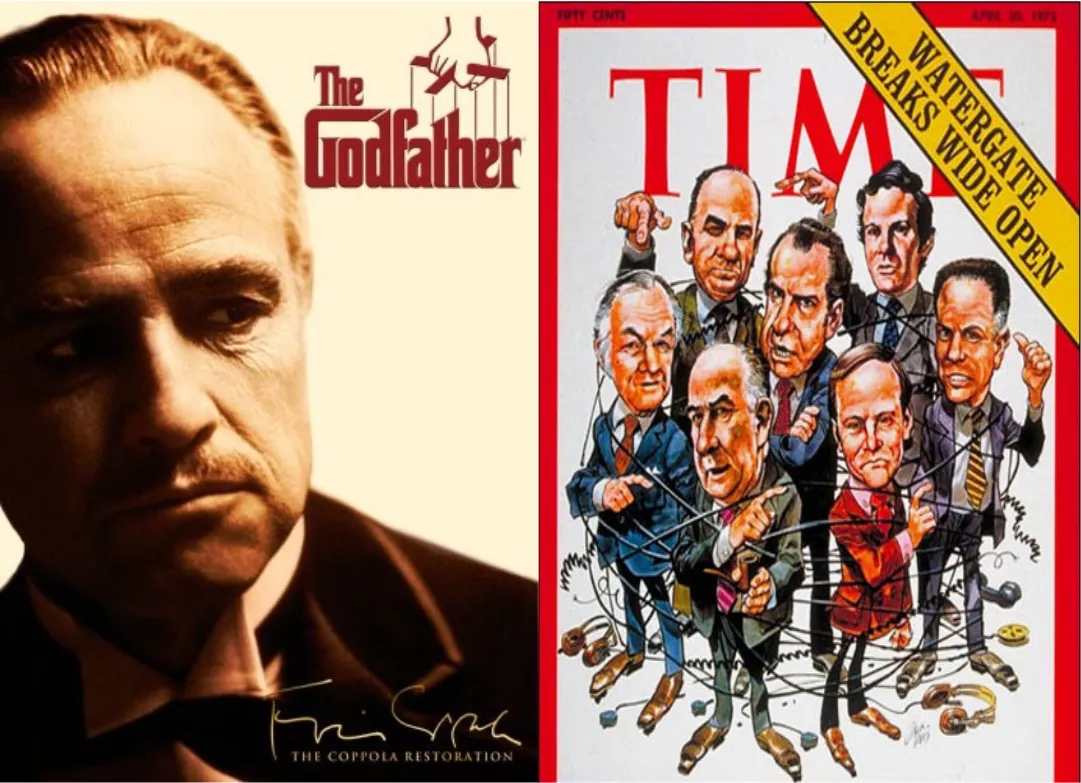
The Cultural Resonance between the Simultaneous Release of The Godfather (1972) and the Breaking News of the Watergate Scandal
Going beyond the collective consciousness and energies of the creative environment itself, can we also say that there are energetic influences between a cinematic work, the creative team, and the greater dimension of collective consciousness, culture, and society? How do we explain those films that seem to profoundly resonant with greater cultural and social movements and events, like the simultaneous release of The Godfather (1972), a film about power and corruption, and the breaking news of the Watergate scandal; or The China Syndrome (1977), a film about a nuclear reactor accident, opening just twelve days before the occurrence of the hauntingly similar real-life accident at the Three Mile Island Nuclear Reactor.
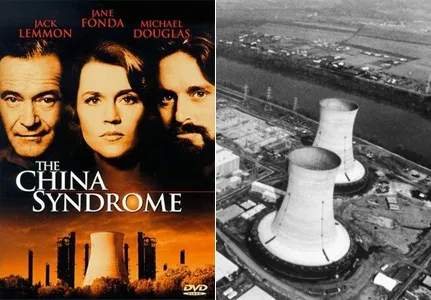
The Cultural Resonance between the Simultaneous Release of The China Syndrome (1977) and the Accident at Three Mile Island
On a more subtle level, some films also appear to subtly resonant with the zeitgeist or the spirit or energy of the times. Take for example, the year 1939, a year considered by many film historians to be one of the greatest years of film history.27 That year, as America and the world edged toward a world war, movie goers watched some of the greatest films of all times exploring the end of innocence and the triumph of the human spirit in powerful screen classics, including Gone with the Wind, The Wizard of Oz, Wuthering Heights, Stagecoach, Ninotchka, and Mr. Smith Goes to Washington, to name only a few.
When viewed collectively, these films appear to be the perfect emotional prescription for the times. Were these cinematic-to-collective-reality connections merely accidents, random coincidences, or are they indicators of some kind of subtle/causal energetic/informational tetra-enmeshment between the individual consciousness of cinematic creators, the cinematic creation process, the cinematic work, and the greater collective?

Star Wars (1977) and the Cinematic and Cultural Power of “The Force”
Another interesting case is that of the first Star Wars film (1977). Many film historians and theorists have explored the seemingly powerful influence this cinematic work has had on both film history and on culture itself, including its rebirthing of mythology and the hero archetype when both the cinema and the greater culture were starving for both, and the pervasive penetration of its newly born myths and archetypes into the greater culture, including the universal spirituality concept of “the Force” and its archetypal transcendence of the duality between science and religion.28
Films like Star Wars, and those mentioned above, appear to answer a need of the collective. Such instances, seen from the energetic lens perspective, might be an indication that the collective is somehow communicating with the cinematic creation process on multiple levels, and that one of these potential levels of communication could very well be some form of subtle and/or causal energetic/information exchange between the individual and the collective.
Preliminary research into the collective dimensions of consciousness and energies does suggest that there is indeed a potential collective dimension of both consciousness and energy; that consciousness may be local and non-local in its influence and effect; that consciousness and the material realm somehow do appear to interact in certain instances; and that energy does appear to be part of the communication link between these two realms.29
Based on this research and on my own experience and preliminary research in this area, I would venture to say that there appears to be gross, subtle, and/or causal connections to varying degrees between a cinematic work and the consciousness and energies of individual creators, the creative team, the creative environment, and the greater field of consciousness, culture, society, and environment (see diagram below).
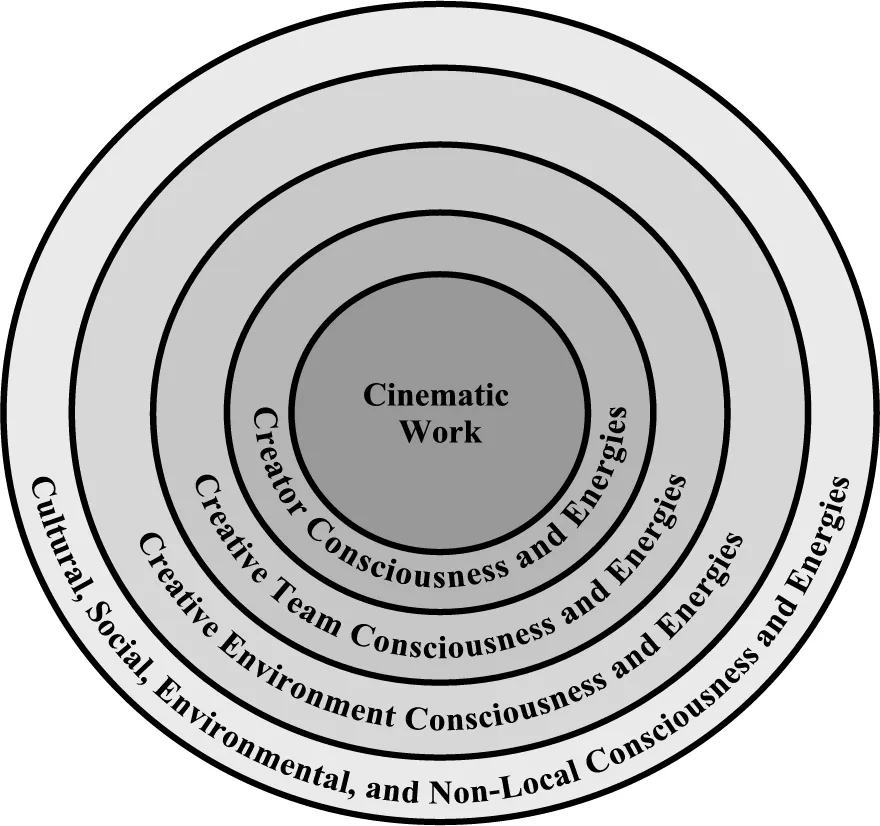
Mapping of the Potential Levels of Connection between a Cinematic Work and Individual and Collective Dimensions of Consciousness and Energy
As a filmmaker that has had direct and numerous experiences of what appears to be subtle and causal energetic/informational communication exchanges between myself, the cinematic creative team, the cinematic work, and the greater relational, cultural, social and systemic environment, I must admit that I am a true believer in the energetic dimensions of the cinematic arts. In addition to experiencing all of the above mentioned potential individual and collective energetic/informational connections, I also have experienced numerous other powerful and subtle communications between myself, the material, the creative team, the creative environment, and beyond.
In these communication exchanges, I have received answers to my creative musings and been given gifts of inspiration and gentle nudging in the right direction from the external world; I have wondered if a character I had envisioned would be believable and then met someone who personified and confirmed my vision; I have seen actors moved into just the right emotional spaces by events simultaneously occurring in their outside lives; I have been moved by external forces and circumstances to change a location or the direction of a scene that turned out to be just what was needed; and I have felt a haunting mirroring of the themes and perceptual constructs of the cinematic work in my own life, in the lives of those around me, and in the greater culture and world.30
Indeed, on a personal level, exploring the energetic lens has offered me a wonderful way to understand these elusive dimensions of the cinematic experience, and given me the tools to potentially harness these forces more consciously and fully. Like Luke Skywalker in Star Wars, I have grown to trust the Force…
Notes
1 The above analysis is potentially pointing to a new approach to the aesthetics of reception, proper to the UL felt-sense of retrospectively sought for “external” correlates in the artifact.
2 In reference to the transmission of energy through the medium of light in the arts, transmission is achieved through reflected light in the case of the fine arts and projected light in the case of the cinematic arts.
3 The dynamics of cinematic or kinetic energies that are inherent in the perceptual reception of moving imagery was explored by filmic expression theorists Slavko Vorkapich, László Moholy-Nagy, and Lestor Novros, among others, and their teachings have been passed down mostly through an oral tradition at select film schools, including USC School of Cinematic Arts where I was privileged to receive the passing of some of this knowledge.
4 For a more detailed exploration of the four quadratic dimensions of energies, i.e., energy itself (UR), energy interactions and systems (LR), and individual (UL) and collective (LL) felt experiences associated with energies, see Senzon, S. A. (2007). Subtle energies viewed from four quadrants. Journal of Integral Theory and Practice 2(4), 134-146.
5 Wilber’s preliminary Integral Energy Taxonomy can be found in Volume 2 of the Kosmos Trilogy: Excerpt G (Wilber, 2003) and Core Integral’s Advanced Integral Lesson Five – Individual Development (Wilber & Fuhs, 2011). It should be noted that the Energetics Lens is still in its infancy and that there is a lot about energies we still do not understand, both from the scientific and experiential perspective. It should also be noted that the general categories or families of energies (Energy Bodies) of Gross, Subtle, and Causal used here are one configuration of Bodies as they are associated with Energies. For other applications of Bodies, including for an advanced analysis through the States Lens, the additional, higher levels Witness and Non-Dual Bodies can also categorized. When applied with the advanced States Lens, Gross, Subtle and Causal Bodies are correlated with Waking, Dreaming, and Deep Sleep states, and Witness and Non-Dual are correlated with more advanced state-stages achieved through advanced spiritual practices. The idea here is that every natural state and/or state-stage has a correlated energy body. These five Bodies are also used with the Wilber-Combs Lattice to refine the mapping of the experience of states and state-stages in relation to altitudes of consciousness. Some configurations of the Bodies include the Witness Body as a higher aspect of the Causal Body, which I have done here with the inclusion of Cinematic Witness States in the Causal Body level. Possible Non-Dual Body correlated creative energy patterns could potentially include areas of such as the transmission of the Creative Source itself through a creative work, as in Michelangelo’s claimed channeling of Divine creativity through his work.
6 The addition and correlation of possible cinematic energy fields is adapted from the oral tradition of filmic expression theorists Slavko Vorkapich, László Moholy-Nagy, and Lestor Novros. See Block, B. (2007). The visual story: Creating the visual structure of film, TV, and digital media. Boston, MA: Focal Press; Moholy-Nagy, L. (1965). Vision in motion. Chicago. IL: Paul Theobald; Vorkapich, S. (1972). A fresh look at the dynamics of filmmaking. American Cinematographer, 2, 183–195.
7 The Energy Frequencies and Frequency Spectrums (Species) section of Table 1 refers to the material reality matter-energy dimension (UR quadrant) of the energy spectrum, the dimension where energy actually resides. Note that the term NMC is used here to represent Neuro-Mental Correlates or energetic brain structures (UR altitudes) correlated to higher mental states and structures (UL altitudes). This is an adapted terminology based on Wilber’s original symbols of SF-1, 2, 3, etc. As Wilber notes, while these structures have not be mapped yet, “everybody agrees that mental states and structures have some sort of correlates in brain physiology, and this is all I mean by the symbols SF1, etc.” (Wilber, SES, p.198).
8 Correlated Levels of Consciousness/ Awareness section of Table 1 refers to the individual-interior experiential dimensions and altitudes (UL quadrant) associated with the energetic dimensions and altitudes in the material matter-energy UR quadrant.
9 Cinematic Energy Fields and Field Spectrums terminologies are based on an integration of this Integral Energy Taxonomy with advanced theories from the field of cinematic expression (Block, 2007; Moholy-Nagy, 1965; Vorkapich, 1972).
10 The preliminary taxonomy of the energy spectrum with correlations to levels of consciousness and potential cinematic energy fields, represented in Table 1, is adapted from Volume 2 of the Kosmos Trilogy: Excerpt G (Wilber, 2002); Core Integral’s Advanced Integral Lesson Five – Individual Development (Wilber & Fuhs, 2011); and the oral tradition of filmic expression theorists Slavko Vorkapich, László Moholy-Nagy, and Lestor Novros (Block, 2007; Moholy-Nagy, 1965; Vorkapich, 1972).
11 The term referential density is a concept from ficto-narrative theory originally put forward by Thomas G. Pavel in his 1986 book, Fictional Worlds. It refers to the depth or density of a text in relation to the fictional world behind it. Here I am adapting it for the cinema to refer to the depth or density of image and sound referential layers, in addition to the text.
12 This image, as with all the other images from 2001 illustrated here, display the use of multiple dimensions of cinematic expression. For our purposes, this particular image illustrates both Character Emotional-Relational States (fear and concern about HAL) and Mental-Perspectival Altitudes (Rational-Scientific Set and Setting). In addition to character placement and performance, and visual, textual, and auditory referential density, Kubrick uses visual symmetry, and contrast and affinity of space, shapes, color, and light to heighten and deepen these fields of expression. For example, the cropping of part of the craft to generate a felt sense that the two astronauts are being watched by HAL, potentially adds additional intensity to their emotional-relational and mental-perspectival fields.
13 In reference to the potential for the energetic transmission of the presence of the creator or creators of the cinematic work, it appears that this can be accomplished not only by an individual cinematic master or auteur, such as Kubrick, but can also be the result of a uniquely configured creative team who work together in a deep and synchronous way, as in the cases of some directorial teams like the Wachowski and Coen brothers, or through holistically orchestrated creative team structures like those created by Robert Altman and his long-time collaborative team. While ascribing the energy source of a cinematic work to an individual or a select group is problematic, since so many creative “hands” touch a cinematic work, there does appear to be enough anecdotal evidence to suggest that a highly focused individual and/or select group can produce a series of works which are perceived by a relatively large number of viewers as being experientially similar in a more subtle way than mere technical style.
14 The preliminary taxonomy of the cinematic energy spectrum in Table 2 includes the basic levels of Bodies, Fields, and Frequencies. The frequencies listed here could be broken down further into sub-frequencies and multiple micro-energetic fingerprints or signature energy patterns, as suggested in the previous descriptions.
15 Light photons and sound waves are recorded, manipulated, and projected to the viewer who then receives and translates the light and sound energies into bioelectric energies which are then translated into various mental, emotional, and physio-sensory experiences. To get a sense of the amount of energy and information being transferred in this process, a single pixel within a single frame of film can carry millions of photons (Click here for more information on this process).
16 For more on the research showing significant findings that suggest that energy systems, bodies, fields, frequencies, and signature patterns can potentially capture, contain, and transmit some of the elements and dimensions of consciousness into the matter/material domain to varying degrees, see Masaru Emoto (1999; 2001; 2005); William Tiller (1997; 2001; 2005; 2007); and Ken Wilber (2003). As for the potential means/mechanisms of energy transmission between consciousness and the matter-energy domain, Tiller postulates a magnetic information field bridging the two domains, acting as an information exchange conduit (2007). Sheldrake’s work on Morphic Fields may also shed some light on this type of information/energy exchange (1995).
17 The embedding of consciousness into material dimensions is indicated by the work of Masuru Emoto with his experiments of embedding dimensions of consciousness into water crystals (1999; 2001; 2005); and the work of William Tiller with his explorations of embedding dimensions of consciousness into an electrical device and then using that device to condition a spatial environment (1997;2001; 2005; 2007).
18 According to the research referenced above, there does appear to be a high degree of multi-dimensional interaction or tetra-enmeshment between individual consciousness (UL), collective or relational and cultural fields of consciousness (LL), energy bodies, fields, and frequencies (UR), and energy systems (LR). This tetra-enmeshment appears to be omni-directional in that interior (individual and collective consciousness) and exterior (energy bodies and systems) domains appear to interact in such a way that every domain has the capacity to be both a receiver and a stimulator for the other. For example, it appears that energies can stimulate consciousness and consciousness can stimulate energies. Note that I use the term Tetra-Enmeshment Fields in the above diagram, wherein fields refers to an open and permeable domain that allows omni-directional movement through it from and to surrounding domains. As noted in note 16 above, there are various postulations as to what this field actually is.
19 It is important to note that the meaning codes captured, transmitted and received in the Semiotic-Mirroring Energy Transference process are profoundly conditioned by individual, cultural, and social constructs that includes everything from basic linguistic meaning patterns to concepts of truth, beauty, art, etc. This process is relatively complex in that the original meaning code of the text creator/communicator is translated through the construct lenses of the receiver (mental, emotional, cultural, etc.; memories around words, symbols, etc.), so the energy signature is often altered to some degree from its original intent.
20 The above clip from the film Altered States (1980) is significant in many ways to the study of cinematic energies in that it appears to contain virtually the full range of potential energies while also having a major narrative theme about the exploration of the connection between the subjective and inter-subjective dimensions of consciousness (UL/LL) and the objective and inter-objective dimensions of matter and energy (UR/LR). YouTube clip of Altered States (1980) also available at:
21 Table 3 depicts some of the multiple and simultaneous energies potentially being transmitted in the above clip from the film Altered States (1980), along with their possibly corresponding Energy Bodies, Energy Transference Modality, and Cinematic Energy Fields and Field Spectrums. Note that both the Subtle/Direct and Causal/Direct Energy Transference Modalities appear to operate in parallel with Semiotic-Mirroring Energy Transference.
22 The above exploration and corresponding research suggests that the Energetic Lens may shed some light on how the embedding of individual and collective interior and exterior altitudes, states, and typologies is potentially mediated to a varying degree by Sutble-Causal/Direct and Semiotic-Mirroring Energetic Transference modalities. The harmonics between cinematic altitudes/energies and viewer altitudes/energies may also hold the key to further understanding and quantifying the sensory dimensions of the aesthetic experience. From this perspective, we can see that while the pathway to the aesthetic experience depends on the personal, cultural and social constructs held by an individual (i.e., definitions of what is beautiful and aesthetically pleasing varies by culture and by altitude/worldview, etc.), the energetic experience of beauty or the sensory-aesthetic moment may be something more universal in that a work of art that lights up all the personally, culturally, and socially aligned aesthetic constructs through the various energy transmission modalities might then ignite a universal state of beauty, or the “ah” moment when we are one with the artifact/phenomenon/experience. Energetically this state may have correlates to what Tiller suggests as consciousness-to-energy supersymmetry and/or superluminal states (2007).
23 For more on the social contagion effect see: Hatfield, E., Cacioppo, J.T., & Rapson, R.L. (1993). Emotional contagion: Studies in emotion and social interaction. West Nyack, NY: Cambridge University Press; Bostock, W.W. (2002). Collective mental states and individual agency: Qualitative factors in social science explanation. Forum: Qualitative Social Research, 3(3). Retrieved July 15, 2010, from http://nbn-resolving.de/urn:nbn:de:0114-fqs020317; Barsade, S.G. (2002). The ripple effect: Emotional contagion and its influence on group behavior. Administrative Science Quarterly, 47, 644-675.
24 François Truffaut’s Day for Night (1973) is a classic film about filmmaking, and in it one can find some subtle examples of the potential tetra-enmeshment of individual and collective consciousness and energies within the cinematic creation process.
25 Write This Down (1982) is a dramatic video I wrote, directed and edited during my fellowship period at the American Film Institute’s Center for Advanced Film Studies. Learn more about Write This Down at: https://open.substack.com/pub/markallankaplan/p/write-this-down-video.
26 While the above mentioned “inside” felt-sense experiences of shifts in individual and collective consciousness and energies in the cinematic creation process do not necessarily bring with them an “outside” look of the state or stage waves of creativity, confirmation of shared “inside” experiences like those cited here, suggest that there may be additional “objective” ways of confirming this inside feel and partial outside look, as in the cinematic artifact itself. This is an area for further research.
27 For more on the films of 1939 and their place in the history of the cinema and the world, see Wikipedia’s 1939 in Film and the Los Angeles Times article, 1939: The Greatest Year in Hollywood History (1989).
28 For more on the influence Star Wars (1977) has had on both film history and on culture itself, see Culture, Identities and Technology in the Star Wars Films (Silvio & Vinci, 2007) and Myth, Media, and Culture in Star Wars (Brode & Deyneka, 2012).
29 William Tiller’s research suggests that both individual and collective dimensions of consciousness can be embedded in material objects through a communication path consisting of consciousness-to-information-to-energy-to-matter and he postulates that the information dimension of the equation could potentially be some form of magnetic/informational field that connects the realm of consciousness to the dimension of energy (1997; 2001; 2005; 2007). Research which strongly supports the collective and non-local nature of consciousness and its potential interaction with material reality also includes the work of Dean Radin (2006; 2009), William Braud (2003), and Princeton University’s Global Consciousness Project.
30My preliminary research, along with the above mentioned anecdotal and empirical evidence, does suggest the potential for the embedding of deep cultural and societal perceptual constructs and structures upon a cinematic work either through direct or indirect subtle and causal energetic transference mechanisms.
 |
|
 |
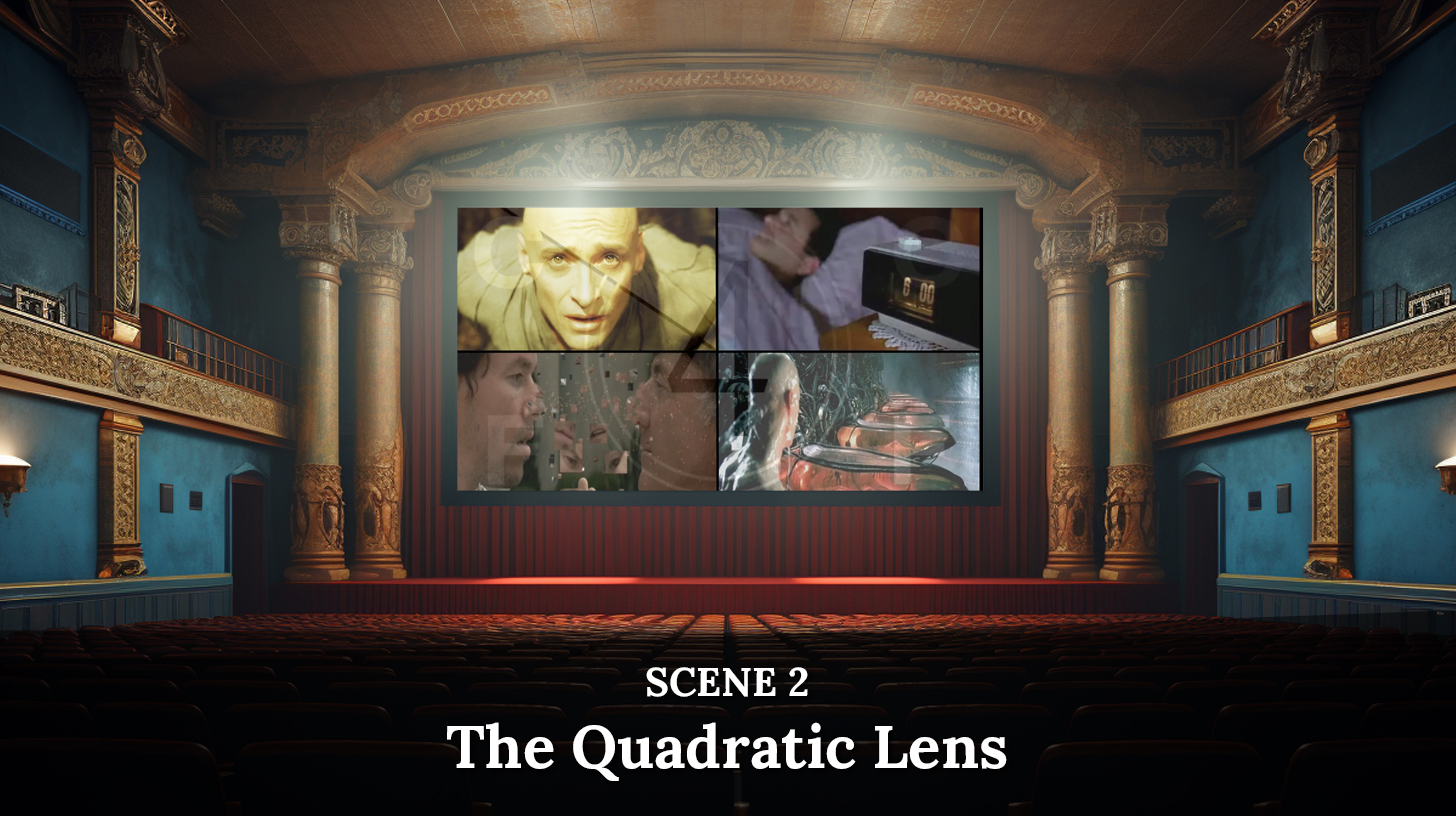 |
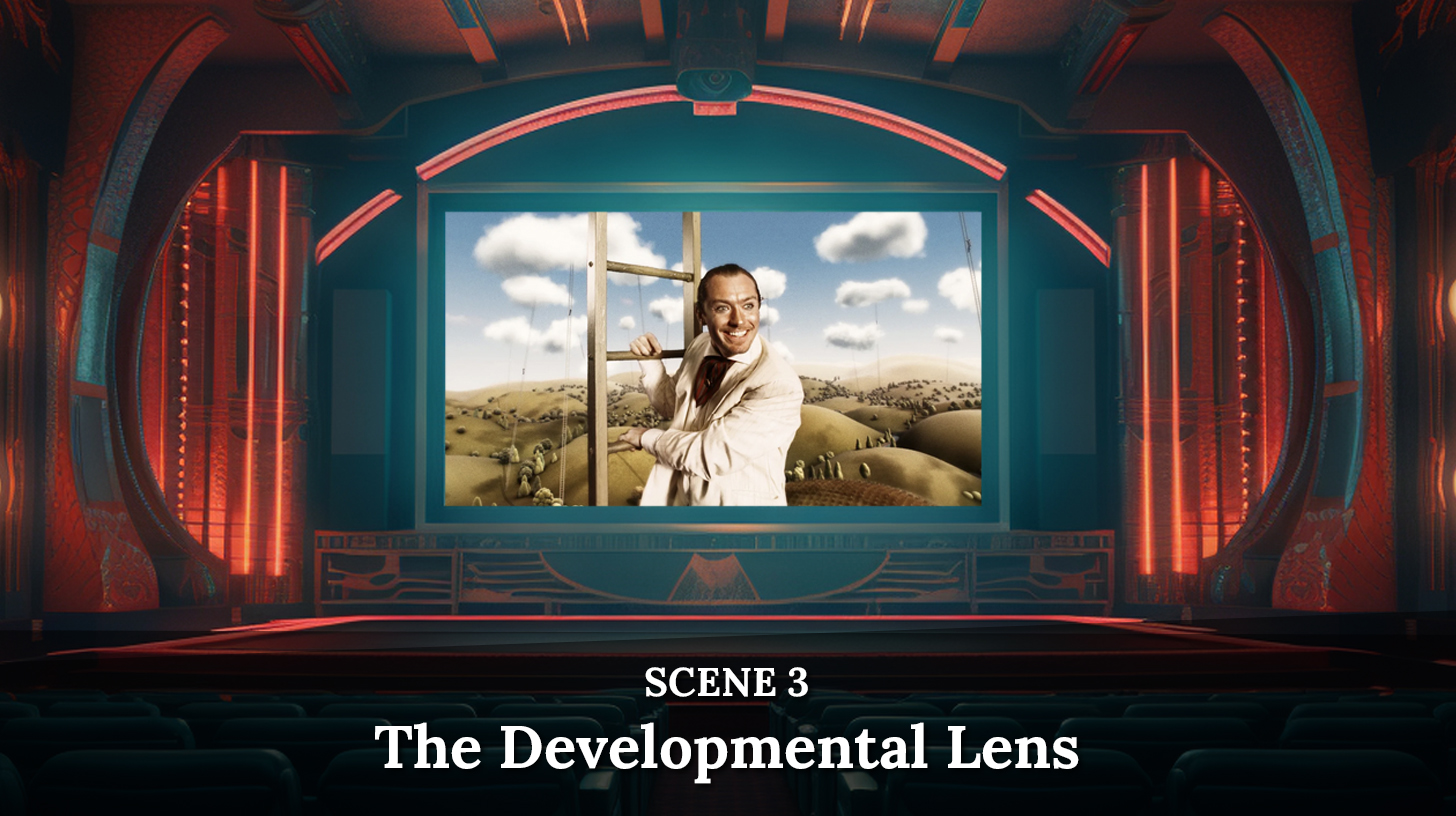 |
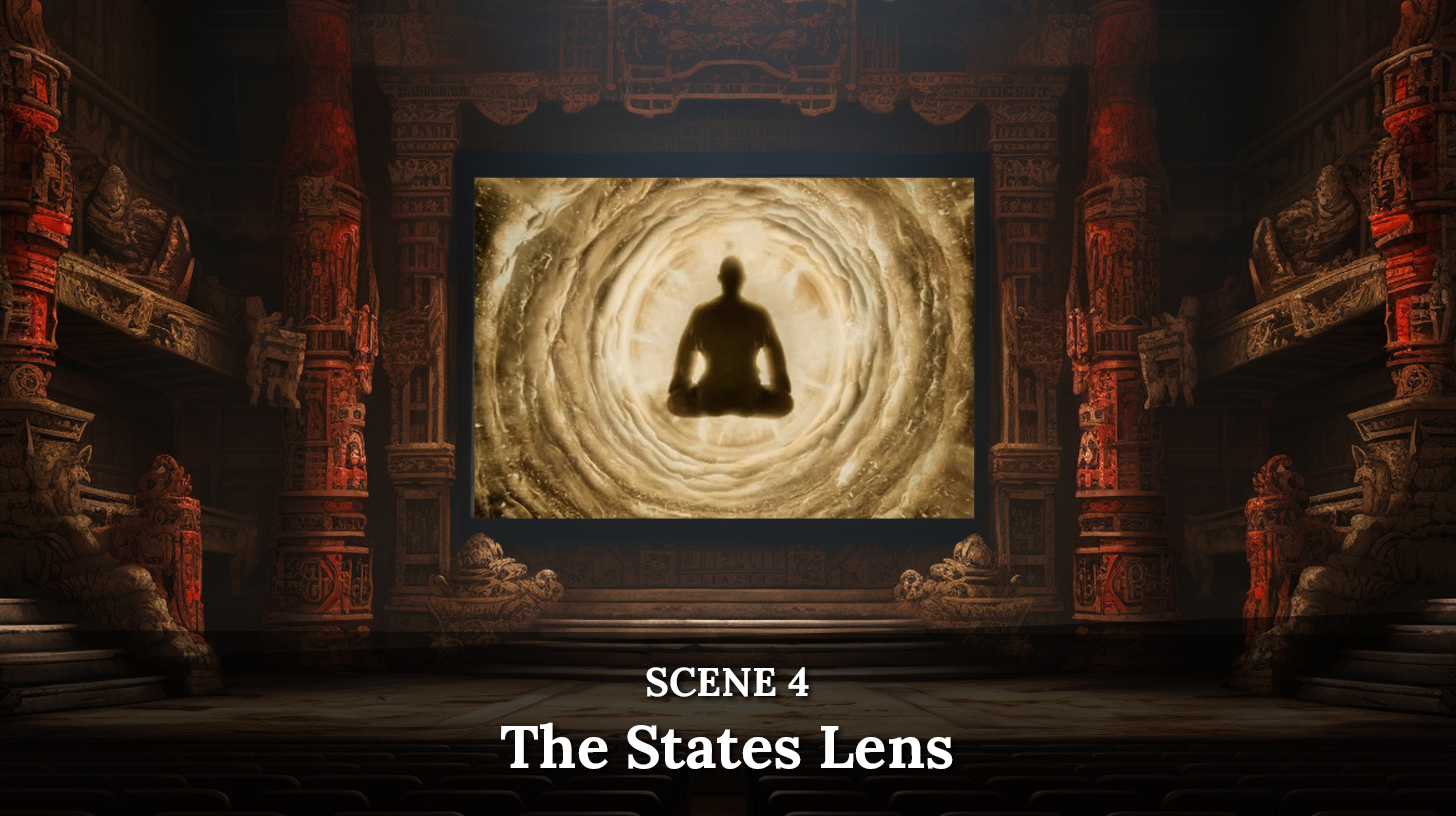 |
 |
 |
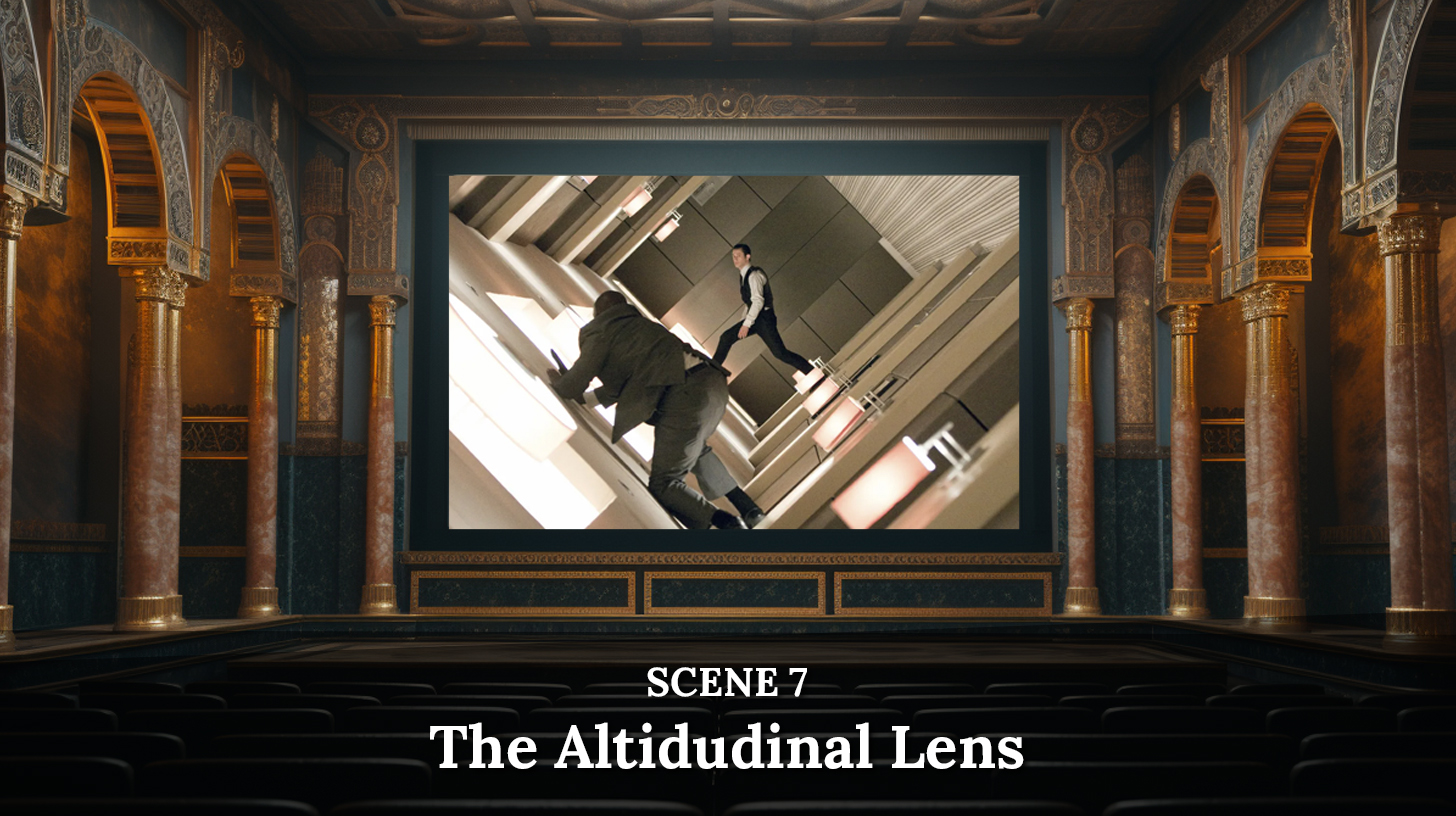 |
 |
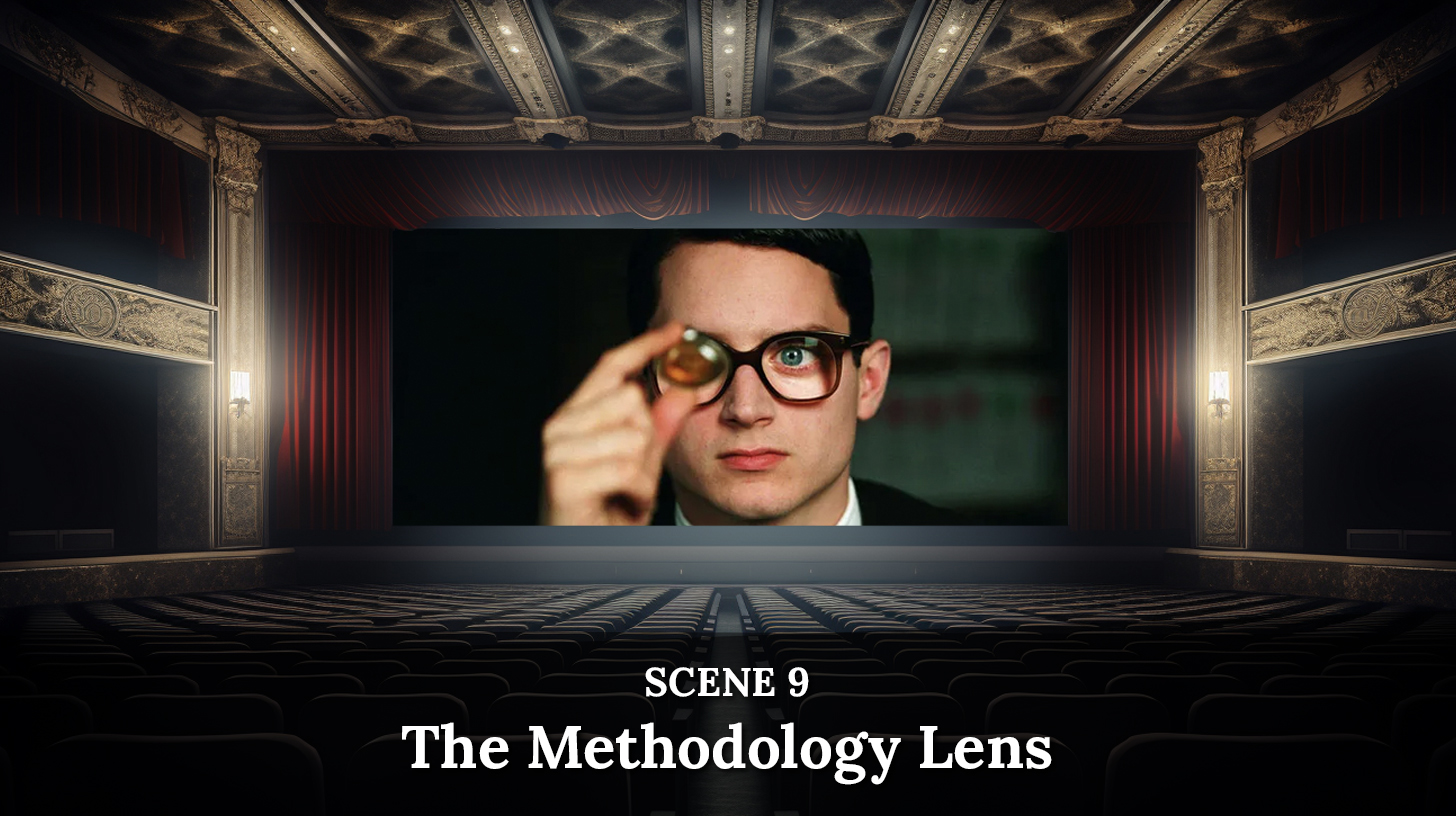 |
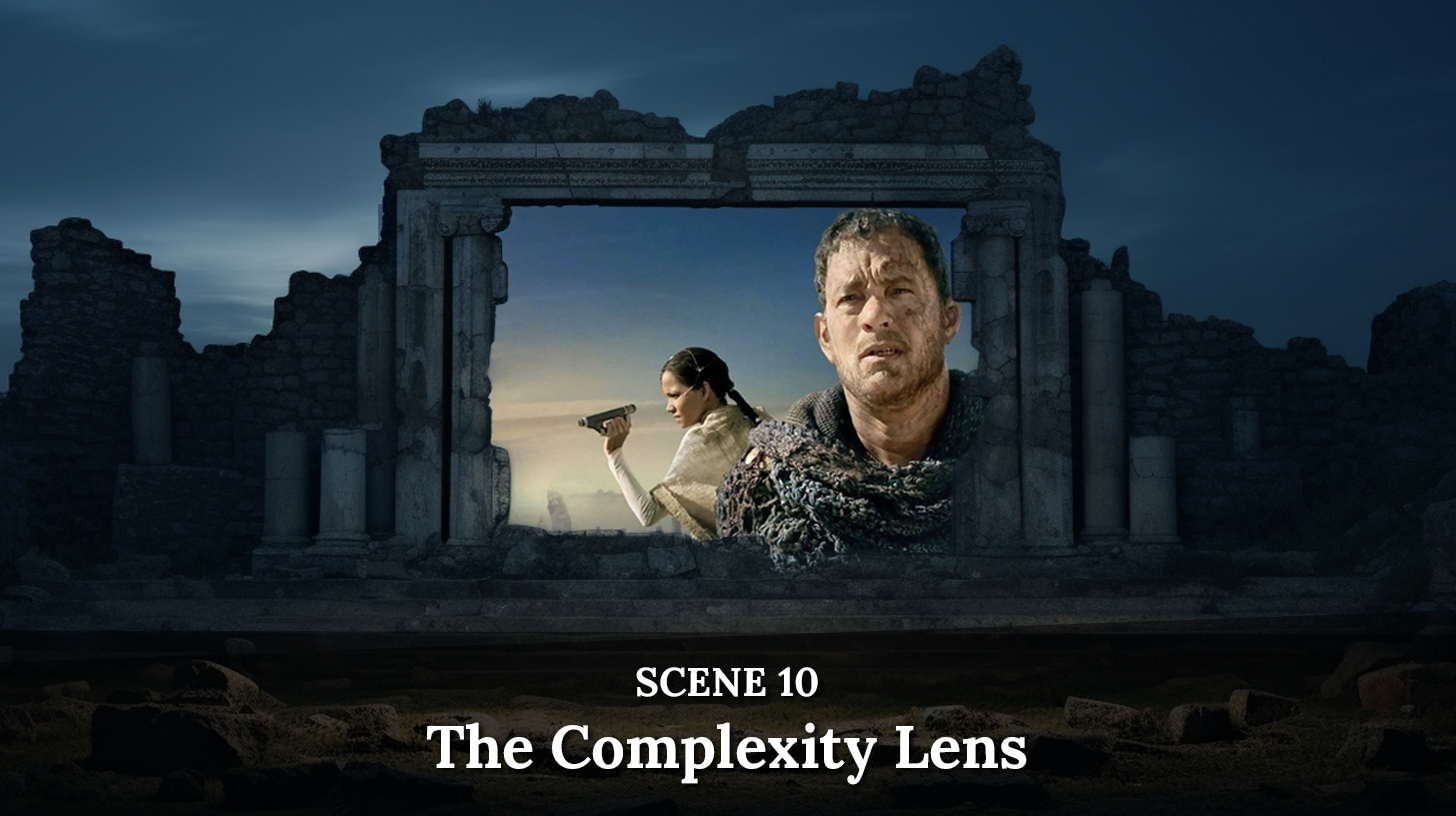 |
 |
|
Related Media
Toward an Integral Cinema
Mark Allan Kaplan
Defining characteristics of what may constitute an integral cinematic work are mapped out and developed into a set of evaluation criteria using the works of Dulac, Gebser, and Wilber. A test of these evaluation criteria with the viewing of several motion pictures is summarized; the results suggest that several past and recent films demonstrate qualities that could be said to constitute an integral cinematic work.
Integral Cinema Studio: A Comprehensive Guide to the Cinematic Experience
Mark Allan Kaplan and Ken Wilber
Mark Allan Kaplan has been curating a groundbreaking integral project, something he calls the Integral Cinema Studio. In this remarkable exploration, Mark and Ken walk us through all of the main elements of Integral theory, using some of our favorite movies to illustrate the basics of the Integral approach while noting how each of these elements has shaped the cinema experience since the invention of film itself.
About Mark Kaplan
Mark Allan Kaplan, Ph.D. is a Transdisciplinary Artist, Filmmaker, Researcher, Consultant, Educator and Media Psychologist focusing on Integral, Transpersonal, and Transformative approaches to Art, Media, and Spirituality. Mark is currently exploring various applications of Integral Theory, including the research and development of an Integral approach to cinematic media theory and practice.


